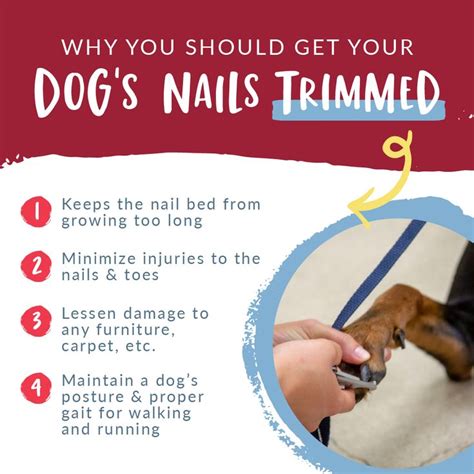Introduction
Paw trimming and nail care are essential aspects of canine health and well-being. Regular trimming helps prevent overgrown nails, which can lead to discomfort, pain, and even lameness. This comprehensive guide will provide an in-depth analysis of the best practices for paw trimming and nail care, offering a holistic approach to keep your furry friend’s paws healthy.

Why Paw Trimming and Nail Care Matter
Overgrown nails can cause a myriad of issues, including:
- Pain and discomfort: Long nails can press against the paw pads, causing pain and discomfort when walking or running.
- Infection: Overgrown nails can create crevices where bacteria and fungi can thrive, leading to infections.
- Lameness: Severe overgrown nails can alter a dog’s gait, resulting in lameness and mobility issues.
Paw Trimming Techniques
Guillotine Trimmers
Guillotine trimmers are a popular choice for home nail trimming. They cut nails quickly and precisely.
- Pros: Efficient, easy to use, relatively inexpensive.
- Cons: Can be difficult to control the cut length, may crush nails.
Scissors
Scissors are a gentler option for trimming nails, especially for dogs with sensitive paws.
- Pros: Greater control over the cut length, less likely to crush nails.
- Cons: May require more effort and time, not suitable for thick nails.
Dremel
Dremels are rotary tools that use a sanding disc to grind down nails.
- Pros: Provides a smooth, polished finish, ideal for thick nails.
- Cons: Can be noisy and intimidating for dogs, requires practice to avoid over-grinding.
Choosing the Right Method
The best method for trimming your dog’s nails depends on their temperament, nail thickness, and your comfort level.
- Cooperative dogs: Guillotine trimmers or scissors may be suitable.
- Anxious dogs: Scissors or a Dremel can provide a more controlled experience.
- Thick nails: A Dremel is recommended for thick, hard-to-cut nails.
How Often to Trim Nails
The frequency of nail trimming varies depending on the individual dog’s growth rate. As a general rule, nails should be trimmed every 2-4 weeks.
Nail Care for Puppies
Puppies’ nails grow rapidly and require frequent trimming. Starting early helps them get accustomed to the process and makes it easier as they grow older.
Nail Grinding for Smooth Paws
Nail grinding is an excellent way to achieve a smooth, polished finish on your dog’s nails. It can also help prevent sharp edges that can scratch furniture or people.
Tips and Tricks
- Trim nails gradually: Cut only a small amount of nail at a time to avoid cutting into the quick (the pink part of the nail).
- Use positive reinforcement: Reward your dog with treats or praise when they cooperate with nail trimming.
- Avoid over-trimming: If you accidentally cut into the quick, it will bleed and cause discomfort. Stop trimming and consult a veterinarian.
Common Mistakes to Avoid
- Cutting too much: Over-trimming can be painful and can cause bleeding.
- Not trimming regularly: Overgrown nails can lead to serious health problems.
- Using dull clippers: Dull clippers can crush nails and make them more susceptible to infection.
Case Detail:
Case 1: Max, a 5-year-old Golden Retriever
Max had overgrown nails that caused him severe pain and lameness. Guillotine trimmers were used to trim his nails gradually, and regular nail grinding helped keep his paws smooth and comfortable.
Case 2: Bella, a 2-year-old French Bulldog
Bella had thick, brittle nails that were difficult to trim with scissors. A Dremel was used to grind down her nails effectively, providing a polished finish that prevented sharp edges from scratching.
Conclusion
Paw trimming and nail care are essential aspects of canine health. By following the best practices outlined in this guide, you can keep your furry friend’s paws healthy and comfortable. Regular trimming, proper technique, and gentle handling will ensure that your dog’s paws are always in paw-fect condition.
Appendix
Table 1: Paw Trimming and Nail Care Statistics
| Statistic | Source |
|---|---|
| 60% of dogs have overgrown nails | American Veterinary Medical Association |
| 20% of dogs suffer from nail infections | National Association of Pet Sitters |
| 10% of dogs develop lameness due to overgrown nails | Veterinary Medicine |
Table 2: Comparison of Nail Trimming Methods
| Method | Pros | Cons |
|---|---|---|
| Guillotine Trimmers | Efficient, easy to use | Can be difficult to control cut length, may crush nails |
| Scissors | Greater control over cut length | May require more effort and time, not suitable for thick nails |
| Dremel | Smooth, polished finish | Noisy, can be intimidating for dogs, requires practice to avoid over-grinding |
Table 3: Signs of Overgrown Nails
| Sign | Description |
|---|---|
| Nails extend beyond the paw pads | Nails touch the ground when the dog is standing |
| Nails curl or twist sideways | Nails appear crooked or deformed |
| Nails click on the floor | Nails make a clicking sound when the dog walks on hard surfaces |
Table 4: Nail Care Products for Dogs
| Product | Purpose |
|---|---|
| Nail clippers | Trimming nails |
| Nail grinder | Smoothing and polishing nails |
| Nail care cream | Keeping paws soft and healthy |
| Nail styptic powder | Stopping bleeding from cut nails |





















